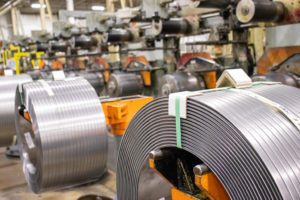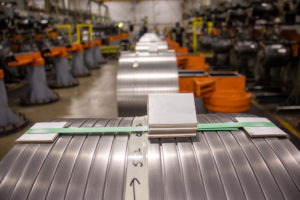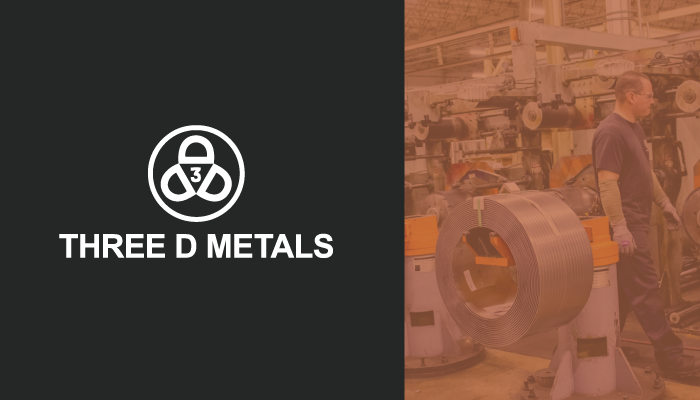Oscillate winding, sometimes referred to as traverse winding, is the process of end-to-end winding of several slit steel coils, with the coil wrapping around itself in a single, symmetrical coil — similar to a spool of thread.
Why would someone choose oscillate-wound coils over something like a ribbon-wound, or pancake, coil? Let’s break down the benefits of this finishing process.
The Benefits of Oscillate-Wound Long Steel Coils
There are a couple of benefits to choosing oscillating steel coils, such as:
- Improved productivity
- Fewer changeovers
- Less material handling
- Reduced scrap
- Increased consistency
“The No. 1 reason to switch to oscillate is the time and productivity savings,” says Burke Manning, a regional plants manager at Three D Metals, covering operations all Three D Metals’ branches. “Our customers typically have a material handler who hangs each individual coil, then runs that out, hangs the next coil, and runs that out. The benefit of oscillating is they hang one oscillate coil, and that’s the equivalent of anywhere from 10 to 30 or 40 pancake, or ribbon-wound, coils.”
With less material changeover also comes the benefit of less material handling. And with today’s personnel shortage, an oscillate-wound coil would mean the handler could be repurposed somewhere else in your production facility.
One of the many benefits of Three D Metals’ oscillate coils is our use of functional welds. Three D Metals typically paints the welds, enabling the customer to isolate the red-colored parts while still allowing them to run through their die. This also removes the need to stop the die when encountering a weld.
Additionally, there’s only one head and one tail on an oscillated steel coil, so there are also reduced scrap benefits to oscillate winding. With multiple pancake coils, you would lose a bit of the head and tail on each one.
“With the switch to oscillate-wound coil, some of our customers have seen productivity increases anywhere from 40 to 60 percent,” Manning added. “It’s a staggering number.”

Common Applications for Oscillate-Wound Steel Coil
Three D Metals has been providing oscillate-, sometimes referred to as traverse-, wound steel for over 20 years. The majority of the oscillate-wound coils we sell are for the stamping industry and are used for a variety of oscillate-wound steel applications.
Here are a few examples:
- Auto parts
- Appliance parts
- Clips
- Clamps
- Fasteners
Oscillate Winding Capabilities at Three D Metals
While Manning noted narrow-slitted products would see the largest gain in choosing to oscillate-wound steel, for a quarter-inch to 1-inch size product, Three D Metals offers oscillate-wound coils for a variety of applications.
The following are Three D Metals products with oscillate-wound steel capabilities:
- Alloy 1045 – 1095 High Carbon Spring Steel
- Gauge: .010” – .125”
- Temper: Annealed
- Width: .187” – 48”
- Alloy 1008 – 1010 Low Carbon Steel
- Gauge: .010” -.125”
- Temper: Annealed to Full Hard
- Width: .187” – 48”
- Alloy 300 Series Stainless Steel
- Gauge: .015” – .090”
- Temper: Annealed to Full Hard
- Width: .187” – 48”

Three D Metals offers both oscillate- and ribbon-wound slit coils, as well as straight-slit coils. Contact us at sales@threedmetals.com to learn more about what would be the best finishing process for you.
If you already have the dimensions of a part you’re looking to produce, you can also fill out our request a quote form. Either way, one of our friendly team members will be happy to answer any of your questions!

